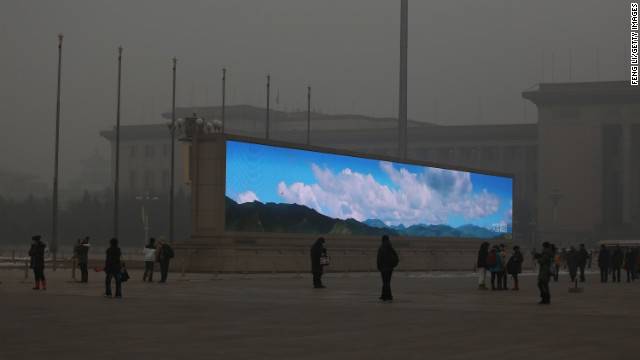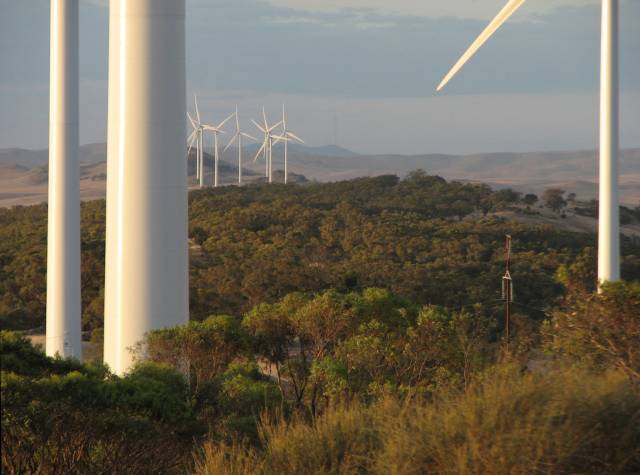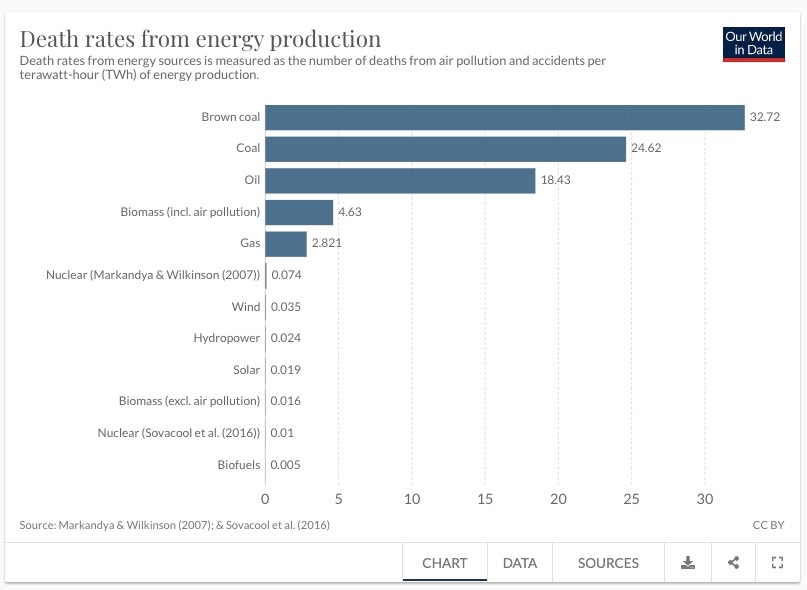Introduction
| ||||
|
The main sources of ambient air pollution are petroleum powered motor vehicles and coal burning. The main sources of air pollution in homes are coal smoke, kerosine smoke (from lamps) and wood smoke.
Air pollution from the burning of fossil fuels includes:
- Photochemical smog and low-level ozone; both of which can cause respiratory problems, lung damage, and increased risk of heart disease;
- Oily unburned carbon from diesel exhaust, which is particularly harmful to health;
- Sulfur dioxide and nitrogen oxides; both of which can lead to the formation of acid rain, which can damage crops, forests, and freshwater systems.
Berkeley Earth (2015) compared the health effects of air pollution to cigarette smoking. They found that living in the European Union exposed one to air pollution equivalent to smoking 1.6 cigarettes per day. For China the figure was 2.4, in Beijing, 4.0. Much of the air pollution in China and India is from coal burning. A number of Indian cities have similar air pollution problems to Beijing and a substantial part of that pollution comes from burning coal from my country, Australia.
US President Barack Obama (late May 2014) said:
"We don't have to choose between the health of our economy and the health of our children"
and
"As President, and as a parent, I refuse to condemn our children to a planet that's beyond fixing."
Australia's part in the crime
This page was written in Australia, a nation that mines 5.5% of the world's coal and exports more coal than any other: 38% of the world's total coal exports are from Australia. Making the conservative assumption that only two million of the seven million deaths attributed to air pollution are due to coal burning we can calculate that Australian coal causes 110 000 deaths per year.Australia ranked 60th of 61 nations in the Climate Change Performance Index of 2015 and, if anything, the actions of the Morrison government of 2018-2022 has further damaged Australia's standing. This is a cause for national shame.
In Australia in 2017 our Liberal coalition government couldn't see past the profits that they believe can be made by digging up and burning or exporting millions of tonnes of this killer commodity. Curiously they manage to ignore or overlook the profits that could be made from clean, sustainable, renewable energy in which Australia could be a world leader.
|
As Frank Jotzo, Director, Centre for Climate Economics and Policy, Australian National University, wrote in The Coversation,
"New coal plants wouldn't be clean, and would cost billions in taxpayer subsidies".
"Major Australian energy companies have ruled out building new coal plants. The Australian Energy Council sees them as "uninvestable". Banks and investment funds would not touch them with a barge pole. Only government subsidies could do it."
|
|
Australia's energy future is with renewables; this is obvious to all but the most intentionally blind.
Outside Australia, people and the more progressive organisations are turning away from coal because they see its shortcomings and because they see it lacks a viable economic future. They are turning toward clean, non-polluting, renewable energy.
Coalition support for the coal industry is not new, a quote from PM Tony Abbott on 2014/05/28:
"It's particularly important that we do not demonise the coal industry and if there was one fundamental problem, above all else, with the carbon tax was that it said to our people, it said to the wider world, that a commodity which in many years is our biggest single export, somehow should be left in the ground and not sold. Well really and truly, I can think of few things more damaging to our future."PM Abbott would like to export even more coal and death, and he would do so if the Australian people allow him to. The man, who calls himself a Christian, has not the slightest conception of morality.
Prime Ministers Turnbull, Abbott and Morrison seem to be among the very few national leaders on the planet who want minimal action on climate change and ocean acidification. Tony Abbott is a man who claims to be Christian yet who seems to be motivated only by ambition and money.
How much CO2?
In 2012 Australia mined about 430 million tonnes of coal. This is about 14 tonnes each second. When these 14 tonnes are burned they produce about 25 tonnes of CO2 every second – which goes straight into the atmosphere! This is a matter for national shame.|
|
Fossil fuels compared to the other energy sources
|
Note that these are the death rates per terawatt-hour of energy produced, not the total number of deaths.
It can be calculated from the data on the graph that if all methods of energy production were used in equal amounts 69% of all deaths would come from coal burning (brown and black) and a massive 94% would come from fossil fuels in general (coal, oil and gas).
If fact, as fossil fuels, especially coal, are used more than most other methods of power generation the proportion of deaths from the burning of coal must be even greater than this.
The article in Our World in Data expressed the figures in another way as well. If there was a "town of 27,000 EU citizens, who would collectively consume around one terawatt-hour of energy a year. These are the impacts if they got all of their energy from a given source:
- Coal: 25 people would die prematurely every year;
- Oil: 18 people would die prematurely every year;
- Gas: 3 people would die prematurely every year;
- Nuclear: it would take between 14 and 100 years before someone died;
- Wind: 29 years before someone died;
- Hydropower or solar: 42 years before someone died;
- Solar: 53 years before someone died."
|
|
Air pollution from coal is the most dangerous type
Justin Worland wrote a piece in Time on 2015/12/02 under the headline "Coal Is the Most Dangerous Pollutant for Heart Disease".The research showed that air pollution from the burning of coal for electricity generation was something like five times as damaging to our hearts as was general air pollution. The research also showed that Diesel traffic-related soot was associated with heart disease deaths but that particulate air pollution from both wind-blown soil and biomass combustion were not.
PM Malcolm Turnbull is known to have serious concerns about the burning of coal and the resulting climate change, yet he still follows the Liberal party line and promotes the dying coal industry. Will this news give him any second thoughts? I suspect that ambition will win-out over his conscience, again.
The health study report can be read at Environmental Health Perspective.
|
|
Coal mining can pollute rivers too
The Wallangambe River in New South Wales, Australia has been heavily polluted by irresponsible disposal of water from the Clarence colliery for many years. An article in The Conversation, by Ian Wright, Jason Reynolds and Leo Robba dated 2022/02/09 tells of "The stunning recovery of a heavily polluted river in the heart of the Blue Mountains World Heritage area" following years of effort from environmentalists.Quoting from the article:
"For more than 40 years, an underground coal mine discharged poorly treated wastewater directly into the Wollangambe River, which flows through the heart of the Blue Mountains World Heritage area.Something of the history on the Clarence Colliery can be read on the Global Energy Monitor Wiki. "Mining began at Clarence colliery in 1979, while coal storage and transport from the site by rail commenced in 1980 and a coal preparation plant came into production in July 1981.[5] Centennial coal obtained the mine in 1998."
Much of this spectacular wild river was chronically polluted, with dangerously high levels of zinc and nickel. Few animals were able to survive there.
My colleagues and I had been calling for tougher regulations to clean-up the wastewater flow since 2014, after we first sampled the river for our research. Finally, with the Blue Mountains community rallying behind us, the New South Wales Environment Protection Agency (EPA) enforced stronger regulations in 2020."
No doubt there would be many more cases of polluted rivers resulting from coal mining around the world for anyone who cared to look for them.
|
|
More on Australia and coal
|
Effects of the mining and burning of coal on Australian health and environment
William M. Castleden MS, FRCS, FRACS; David Shearman PhD, FRACP; George Crisp MB BS, MRCGP and Philip Finch MB BS, FFARCS wrote a submission to an inquiry into the retirement of coal fired power stations in September 2011 titled The mining and burning of coal: effects on health and the environment. It can be downloaded by clicking here.In the Summary section of the submission they wrote:
- Australia’s coal conundrum is that all political parties say they are concerned about climate change while sanctioning an unprecedented expansion of coal mining and coal seam gas extraction in Australia [this is not true of the Greens].
- Australia’s coal contributes to climate change and its global health impacts.
- Each phase of coal’s lifecycle (mining, disposal of contaminated water and tailings, transportation, washing, combustion, and disposing of post-combustion wastes) produces pollutants that affect human health.
- Communities in which coal mining or burning occurs have been shown to suffer significant health impacts.
- The health and climate costs of coal are unseen, and when costs to health systems are included, coal is an expensive fuel.
- The health costs of burning coal are equivalent to a national health burden of around $A2.6 billion per annum.
- Coal-fired power stations also produce more greenhouse gases (such as CO2) per unit of energy than any other type of power station. Combining greenhouse and health damage costs for Australia gives representative total external costs of $A52/MWh for brown coal, $A42/MWh for black coal and $A19/MWh for natural gas.
The biggest employer in the coal mining Latrobe Valley of Victoria is not coal but health
|
It is interesting to note that the health industries
employ more people in the Latrobe Valley than either coal mining or power generation.
Perhaps this is connected with the poor health of the local people?
Deaths to be expected from proposed coal mines
in the Galilee Basin, Queensland.
Just two mines will cause around 18 thousand deaths each year
Wikipedia gives world coal extraction as 7 865 million tonnes (MT) per
year and total Australian extraction as 431MT.
As discussed above, from the WHO report, it is reasonable to accept that there are at least two million deaths caused by coal burning world-wide each year. If we accept that the deaths due to burning the coal exported from Australian mines cause deaths at the same rate we can do some calculations.
Several mines are proposed in the Galilee Basin in Queensland. Two of the largest:
- Gina Rinehart's, Hancock Coal/GVK, Alpha Coal mine is expected to 'produce' 30MT/year, causing more than seven thousand deaths each year;
- Clive Palmer's China First mine, at 40MT/yr will be responsible for over ten thousand deaths each year.
The coal from the Galilee Basin mines, if mined, will probably be burned in China, India and Japan. Coal fired power station emission standards in China and India are much less stringent than those in Australia.
|
|
China's cancer rates "exploding"; ABC
When China started its great economic and industrian growth a couple decades ago it built many, many coal-burning power stations. At some point it started importing millions of tonnes of Australian coal to burn in these. Since then China has had shocking air pollution, and now enough time has passed for cancers to have developed."China's cancer rates exploding, more than 4 million people diagnosed in 2015, study says". Written by ABC's China Correspondent Matthew Carney, 2016/03/24.
"In some of the industrial provinces, lung cancer rates have increased a staggering four-fold" and the cause seems to be air pollution, largely due to coal burning.
"Cancer has been the leading cause of death in China since 2010, with lung cancer causing the most deaths."
|
|
Energy poverty
The Turnbull Coalition government tells the Australian people that exporting coal to India is a wonderful thing because it lifts so many people out of "energy poverty". But the air pollution from the burning of that coal kills 1.1 million Indians each year year as reported by Think Progress.You can't enjoy having electric lights if you are dead.
We'd be doing the Indian people a much bigger favour if we were to help them develop renewable wind and solar power to lift them out of energy poverty without the pollution from coal-burning.
|
|
Amoeba
The Sydney Morning Herald (September 2017) and other media reported that the "Brain-eating" amoeba, Naegleria fowleri had been found in Lake Liddell, near the Liddell coal-fired power station in NSW's Hunter Valley (Australia).The pathogenic amoeba is associated with warm water. Lake Liddell is used for cooling the Liddell power station so its water is consequently considerably warmer than it otherwise would be. It has been closed for recreational use for safety reasons.
The dangerous amoeba has been found in other water bodies warmed by coal fired power stations around the world.


